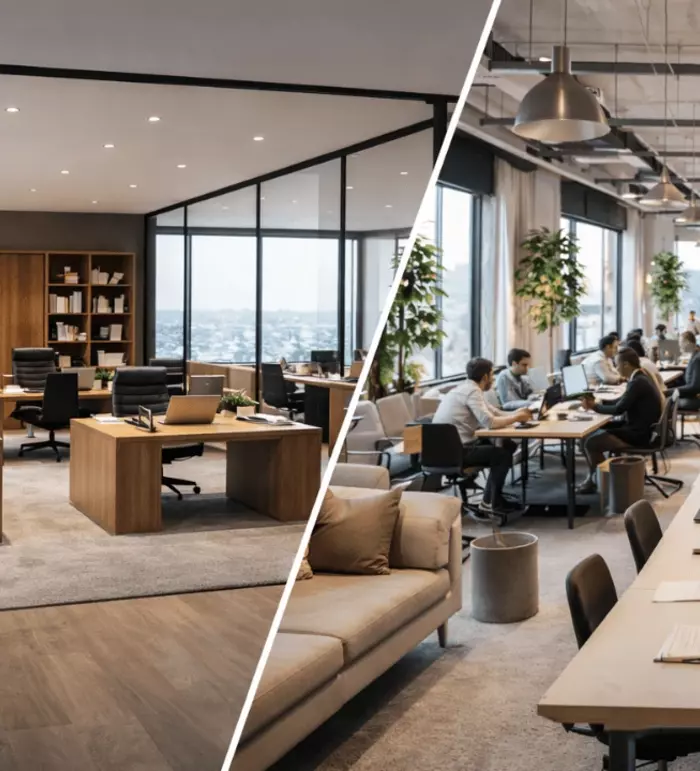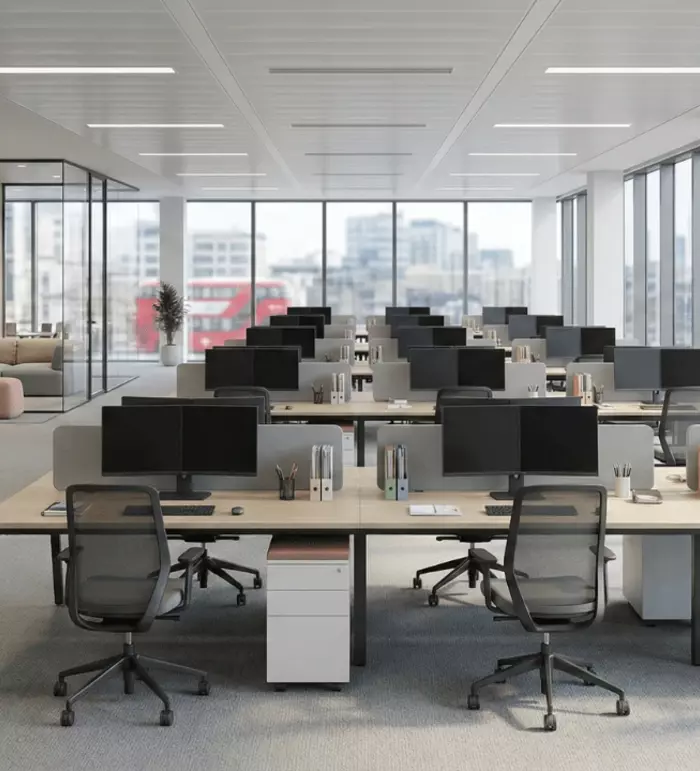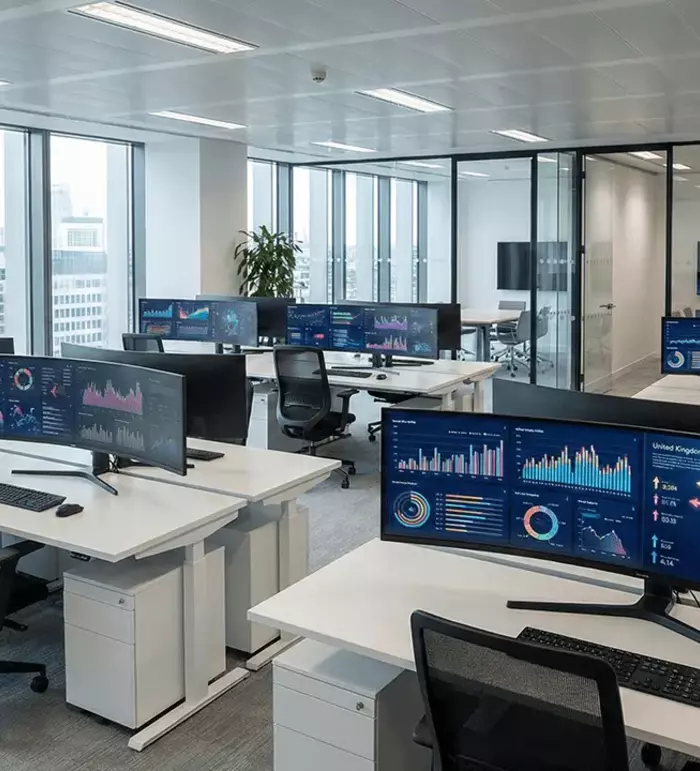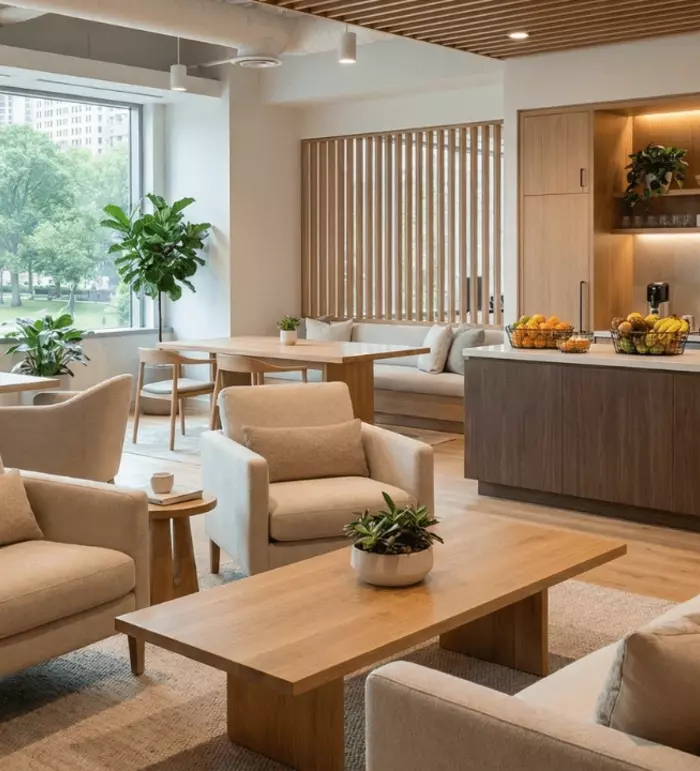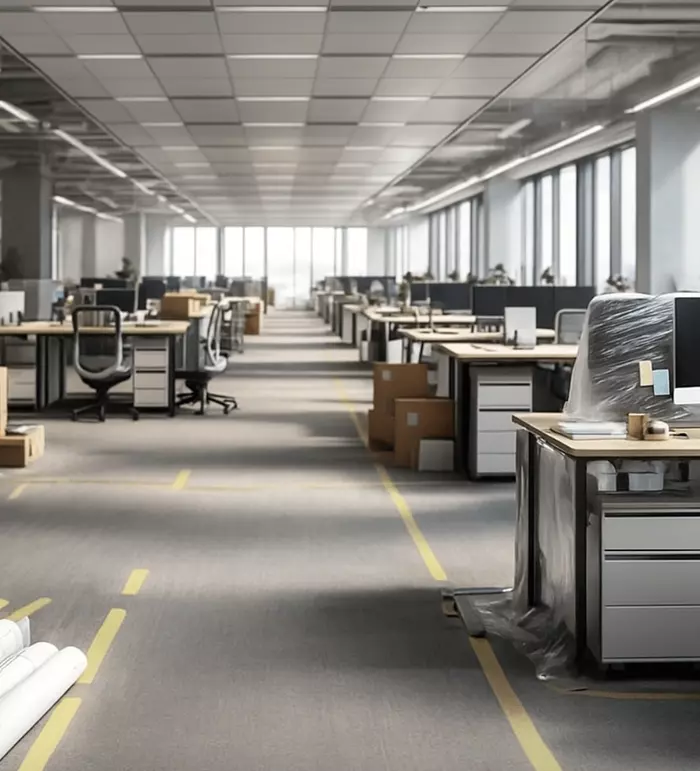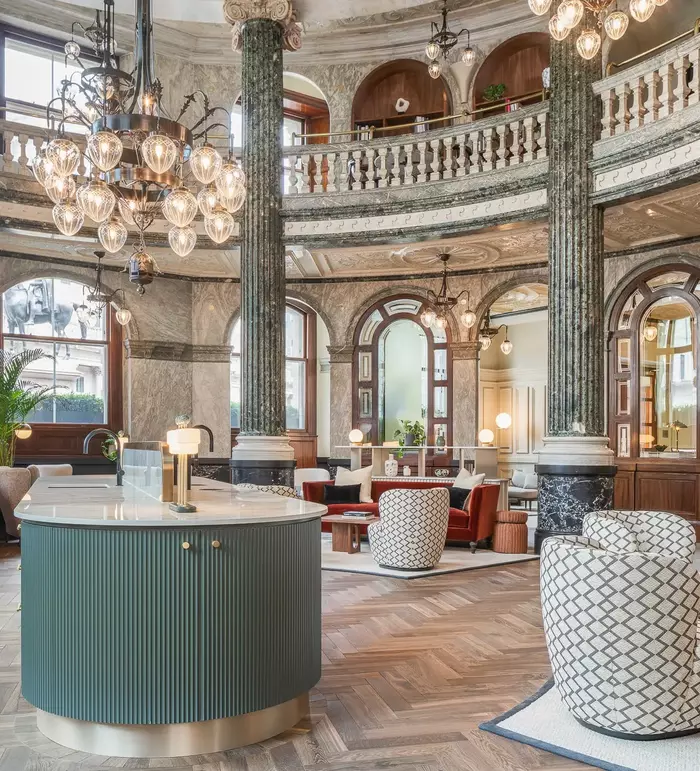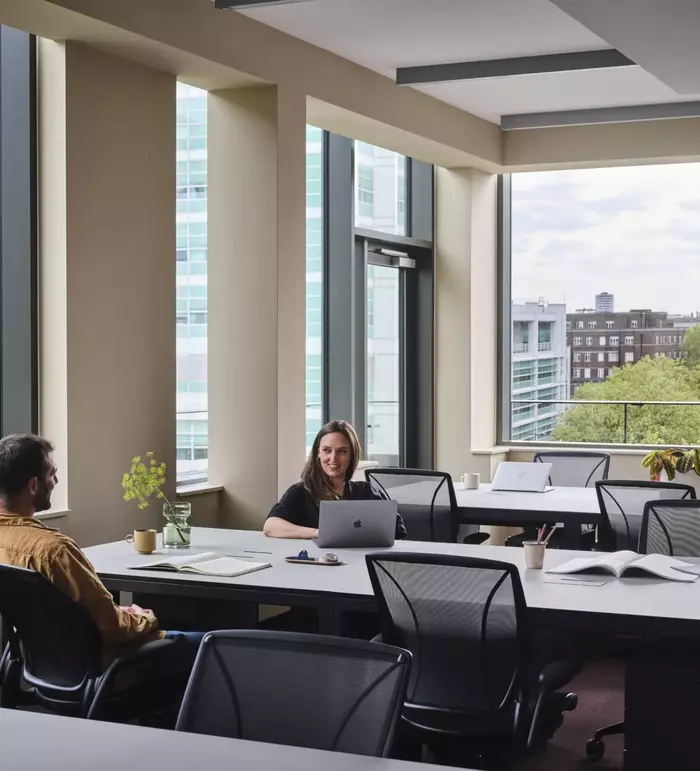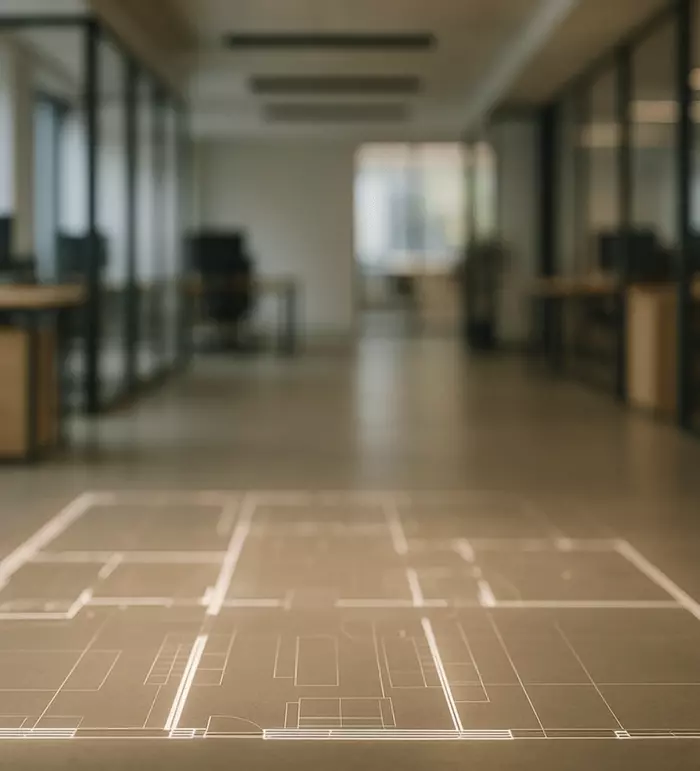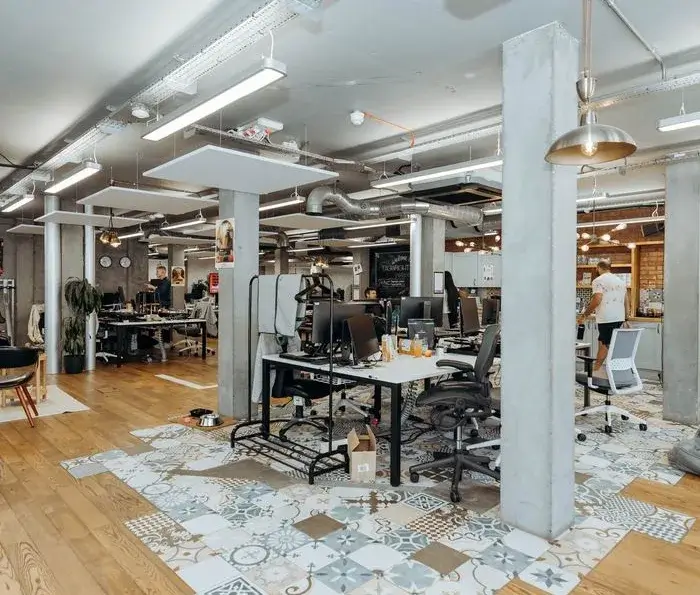How can you be expected to understand your company’s needs or make the most of the collaborative workspaces available if you don’t know what on earth you’re looking at - or even talking about?
At the end of a Nationwide poll conducted in April, over 66% of that remote-working said they were ready to return to the office on a flexible basis. The Health and Safety Executive (HSE) has completed 200,000 inspections to check companies are following Covid rules as companies prepare to return to the workplace. More than 80 million vaccinations have been administered in the UK (as of 28th July 2021) and employers are keen to get their teams back together. The problem is that where your workspace might feel like a distant and foggy memory, flexible working has brought with it an entire dictionary of jargon that HR Heads, Office Managers, and Senior decision-makers alike need to have in their repertoire and fast.
Fear not. Below is an exhaustive and comprehensive list of definitions of all of the jargon around flexible working so when it comes to finding a flexible office to rent - you’ll be in the know.
As
Abbreviations
These areas they say on the tin! Here are the big few buzz-abbreviations you need to know when looking for a serviced office to rent:
WFH: Working from home
WFA: (work from anywhere)
WFNH: (work from near home)
Activity-Based Work Solutions (ABW)
“[ABW] Present a mix of open, semi-private and private spaces in one commercial office to meet employees where they are in the moment, not forcing workers to accomplish their tasks in a specific non-ideal space. But in this contemporary evolution of ABW, employees still keep their desks.”
Jeff Pochepan, StrongProject modern office furniture designer.
Agile working
Similar to flexible working, this means employing malleable and adaptable working practices. Employers are embracing agile working allowing their teams to work as, when, and how it suits the employee. It is an increasingly desired and expected condition of work and has been on the rise, seeing a sharp incline given the pandemic.
Air quality
The degree to which the air in your office is pollutant-free. Serviced office providers have put in place all kinds of air-conditioning and air cleaning features so that your teams can work in a temperature and climate that is comfortable/optimal for focus. This can include anything from:
- air conditioning,
- air filtration such as High-Efficiency Particulate Air (HEPA) bags which capture the smallest airborne particulate matter,
- ventilation: opening windows as well as using in-built air purifying technologies
- purifiers,
- controlling humidity: optimum humidity is between 35-50% to reduce the likelihood of off-gassing (harmful) volatile organic compounds.
Naturally, given the pandemic, reducing airborne pollutants and transmissions is the name of the game and something the serviced office industry is *really* on the pulse of right now.
Amenities
What facilities the office space has available for your use. Amenities can be specific and small-seeming but oh-so-significant: like wifi and plug sockets or can be grand and desirable facilities ranging from showers, bike racks, and roof terraces through to Wellness Rooms and secret Arcade bars.
Assigned Workspace
A dedicated individual’s desk.
Bs
Biophilic Design
Interior aesthetics that incorporate the natural world. As Gensler’s Managing Director Philippe Pare explains:
“Quite a few studies show how proximity to nature helps you foster a more positive outlook. If you ask someone to give you an image of something inspiring, nine out of ten people will show you a landscape, so there’s something innate in nature that equals happiness.”
Find out more about how crucial Biophilic design is to the future of work in this article.
Breakout space
Communal seating/working areas in a shared office environment. Breakout space can take many forms in 2021 and serves multiple functions, where open-plan offices of the past fell short. Breakout spaces are championed for their multi-purpose use: they can facilitate collaborative working but can also be used as individual work zones. They can include soft seating areas, luxury furnishings, kitchen facilities, bar stools, half-moon spaces, hot-desks, and pods.
Cs
Campus HQ
This term is modelled on University campuses to describe the modern workplace that facilitates get-up-and-go, work as you move around the space office design. Campus HQ’ allows you to roam free within a coworking space and refers to the overall flexibility of a modern workspace - as opposed to office cubicles of the past, or even simply 'open-plan' offices of the past that embody traditional layouts, furnishings, with static desktop computers and homogenized zones.
CAT A Fit-out
‘CAT’ is abbreviated for Category. They refer to a building's fit-out: CAT A referring to the basic interior of a building - including things like:
- electrical and mechanical services
- lifts
- lobbies
- lighting
- fire safety systems
- toilets
- air conditioning
- heating
but will be the bare bones of a space, allowing you to furnish and personalise the space to your heart’s content. Usually, CAT A is what the landlord of your serviced office will agree to if they’re looking to rent the space imminently.
CAT B Fit-out
Category B fit-out covers all the trimmings that overlay a CAT A fit-out and can encompass everything - from the doors to the lightbulbs, books to the wall art.
Co-working or coworking
Working with other people in a shared workspace; co-working, or coworking, are used interchangeably to refer to people working within a shared building or space. Where conventional office leases see you rent your own private office long term, (this might be in a building of offices), co-working is when this happens but on a shorter, more flexible basis. This might mean areas where people work at desks on an ad-hoc basis and hot-desk. (Note: hot-desking gets its own definition below!)
Ds
Density
As in ‘office density’ is the space per square foot per workstation in the workplace. On average, workstations tend to be anything from 35-50 square feet per workstation in serviced offices.
Desk Screens
Desk partitions that divide the workspace.
Fs
Flexible lease
Flexible leases are different to conventional leases which usually span anything from 5-10 years or beyond. Flexible leases, by contrast, can be a matter of days/months or years - usually, they are a 12-month minimum, but nothing is off the table.
Flexible working
This term has been applied to any and every form of working we are seeing in 2021 and has grown in popularity, steadily year on year for the last two decades, according to Buffer’s 2020 State of Remote Work Report. Flexible working is not without its perks when it comes to restoring your work-life balance, but it's not without its pain points. It is an umbrella term that simply means employees now have greater input into how their working week is structured and can refer to the days, times, and location of where they’re asked to work.
Common uses are:
Flexible working hours.
Where Line Managers and their teams determine what schedules work best for them to work. This is a growing and appreciated work perk considering the increased strain on individuals’ with caring responsibilities, parenting, or maintaining a healthier work-life balance.
Flexible office hours.
One of the recommended ways in which we are seeing companies of all shapes and sizes asking their employees to return to work safely is to offer them the option to come into the office on rotated schedules/less conventional working hours of the day; commuting at 10 am and leaving at 6 pm, for example.
Working part-time.
Working a long day on a Monday and taking Fridays off, or offering KIT - aka ‘Keep in touch’ days; where employees who are furloughed/ off for an extended period on paternity/maternity leave can come into the office to keep in touch with the business, market trends, and maintain a rapport with their clients.

Gs
Gen X
Those born between 1965 - 79/80 and currently 41-56 years old.
Gen Y
Those born between 1981-1994-6 currently between 25-40
Gen Z
Born between 1997 and 2012. They are currently between 6 and 24 years old.
Hs
Hot desking
No fixed or assigned seats. People can turn up, plugin and get cracking as they see fit in a communal breakout space. Usually, areas have desks and plugs but aside from that, they can take various forms: can be sit-stand desks, bleacher-style benches, or soft furnishings.
Hub and spoke
Alike to the concept of the Third Space, if the hub is your main office, your company’s HQ where people can interact in the ‘hub.’ The ‘spoke’ can be an area wherever you feel you can work productively. This could take the form of a cafe, a virtual office or even a hot-desk in a coworking space.
Hybrid working
Refers to employees splitting their time between working-from-home or from the office. (Or indeed, working from anywhere at all!) Business Psychologist and Author of Busy @ Home: How to Thrive Through the Covid Crisis, Tony Crabbe acknowledges that not only is the hybrid working model here to stay, “it’s actually a bit bonkers that it’s taken us this long to start doing it.” Mr Crabbe isn’t the only one to think ahead when it comes to implementing hybrid working for the long haul.
Microsoft has actually paved the way with a 6-stage ‘Hybrid Workplace Dial’ wherein the terms and way the company works can alter in line with the unpredictable pandemic-advised precautions.

Kurt DelBene, Executive Vice President of Microsoft, outlines how 54% of survey respondents return to the office in ‘Stage 4’ and spend around a quarter (or less) on any one worksite. The hybrid working model is a viable, welcome, and working alternative to the traditional 9-5, so it would seem.
K

KIT Day
'Keep in touch' days; where employees who are furloughed/off for an extended period on paternity/maternity leave can come into the office to keep in touch with the business, market trends, and maintain a rapport with their clients.
Ms
Managed office
A managed office is where a serviced office operator takes a lease and then fits the space out like a serviced office and runs it for the client. The client gets the inclusivity of service and cost and the security of their own non-shared space and the security of a medium-term (2 years+) contract that they can’t be thrown out of.
Mobile employee
Hybrid working experts, Robin, define this as employees who spend less than 20% of their time at their desk.
Leased office space
The contract under which a landlord rents a commercial property to its tenant for an agreed length of time.
Occupancy
The tenants occupying a serviced offices building (can also be the owners but in our contexts, the tenants).
Office Contract Tracing
The record of who has worked where within a shared office building on any given day and time so that people can isolate appropriately and continue to work safely in the office during the COVID pandemic.
Sensors
Technology that is used to measure building occupancy and usage at any given time. (They can also be used to optimise a building’s temperature, light quality, and even direct parking to non-congested zones!)
SMART Buildings
Buildings with automated operating systems monitoring all elements of the buildings’ structure. These centralised systems control everything from parking and air quality, to security and lifts. Another way to think of SMART Buildings is like a living organism, with every decision made in that building centralised into one technological automation system. Find out more about SMART Buildings here.
Square footage
The metric used to describe the area there must be per person in a commercial property. This can be as little as 35 square feet per person (that means per desk) but tends to be around 50 square feet. Read this article to learn more about square footage and our best practice recommendations for your teams here.

Third space
The office is space one to complete your work. Home is two. Wherever else? That’s what we (and the industry at large) means by the ‘third space.’
Welcome Desk
Sometimes in the place of a reception desk; the Welcome Desk is visitor-facing and welcomes your employees/ clients into the buildings in a serviced/ coworking office space.
Video-conferencing
2-way camera and computer technology that allows you to hold Zoom, Skype, Teams or any other platforms’ meetings online as if you’re all in the same room where it happens. Great for companies looking to employ hybrid-working models as they return to the office or for teams to collaborate with colleagues working further afield.
Any you think we’ve missed it?
Comment them below and we’ll be sure to add them in!
Need a hand finding your next coworking office space for rent?
Reach out to Flexioffices and we’ll negotiate the best deal for you - hassle-free.
